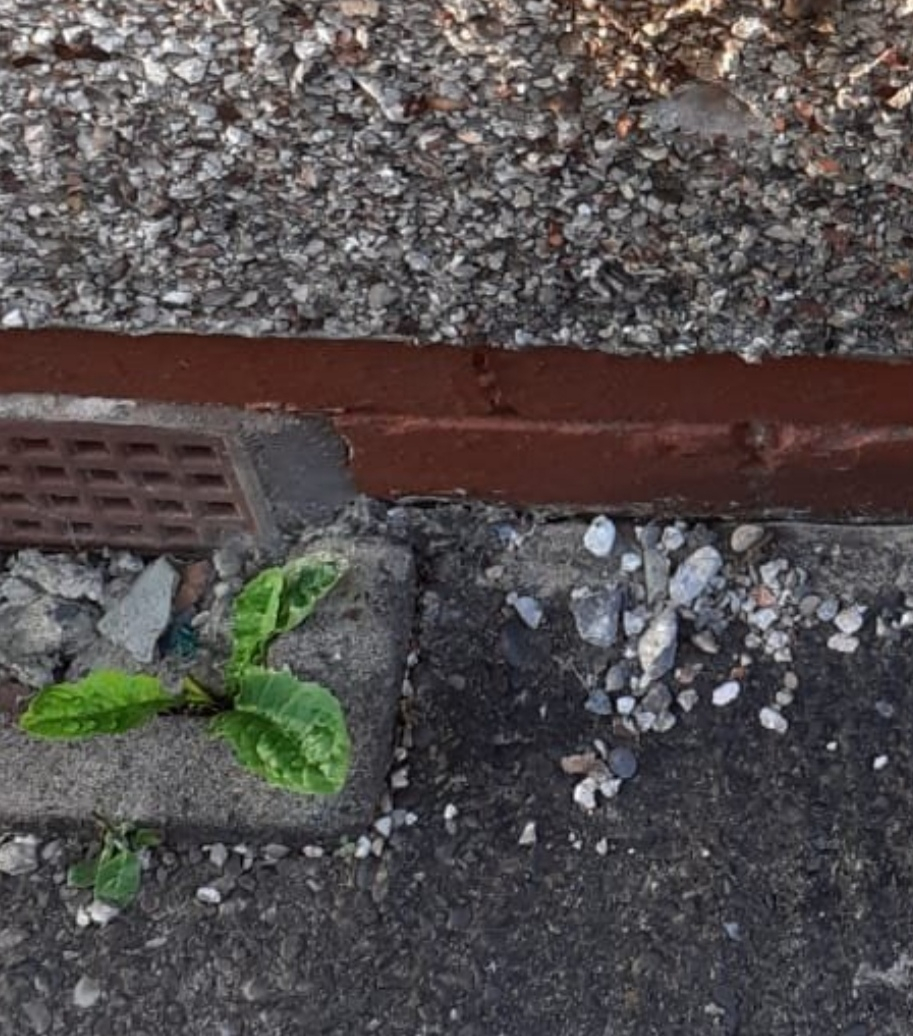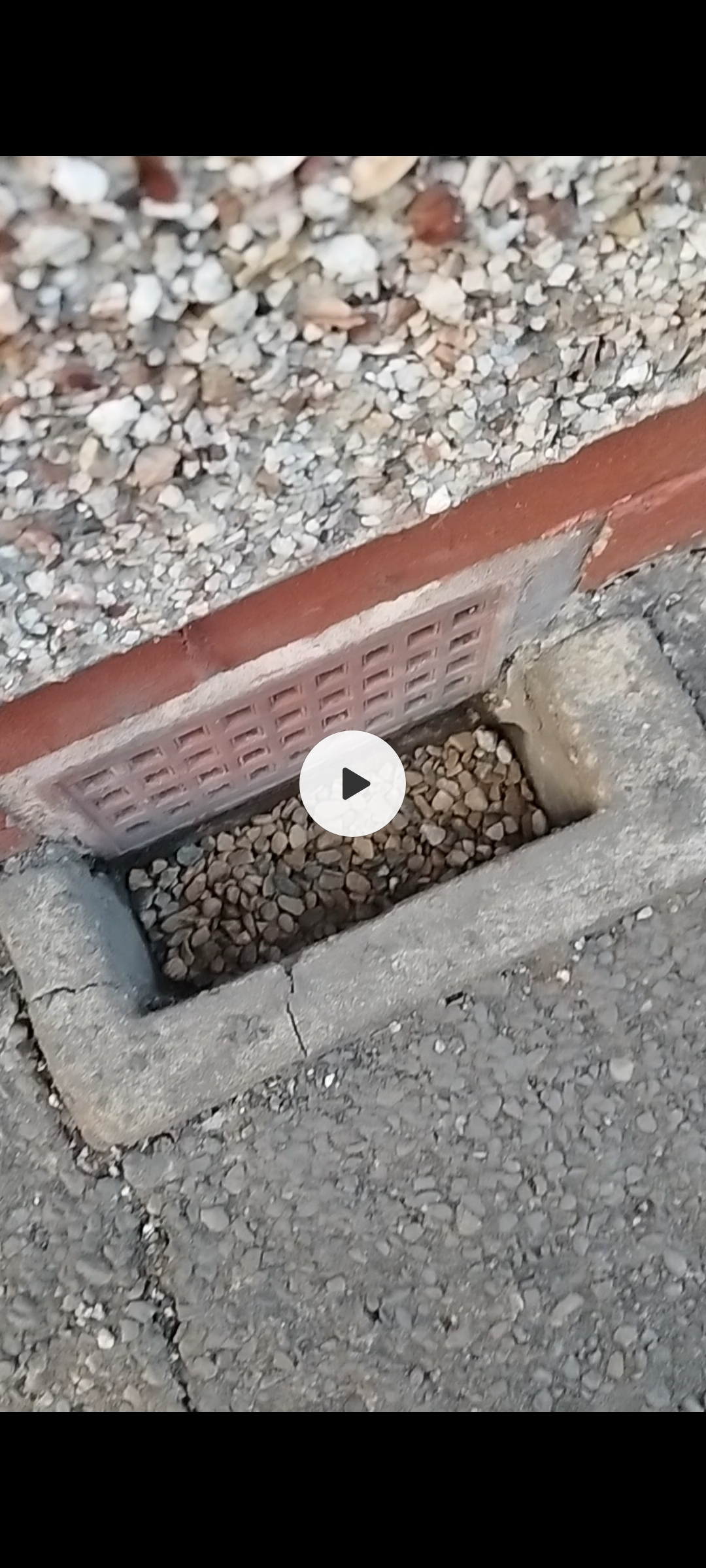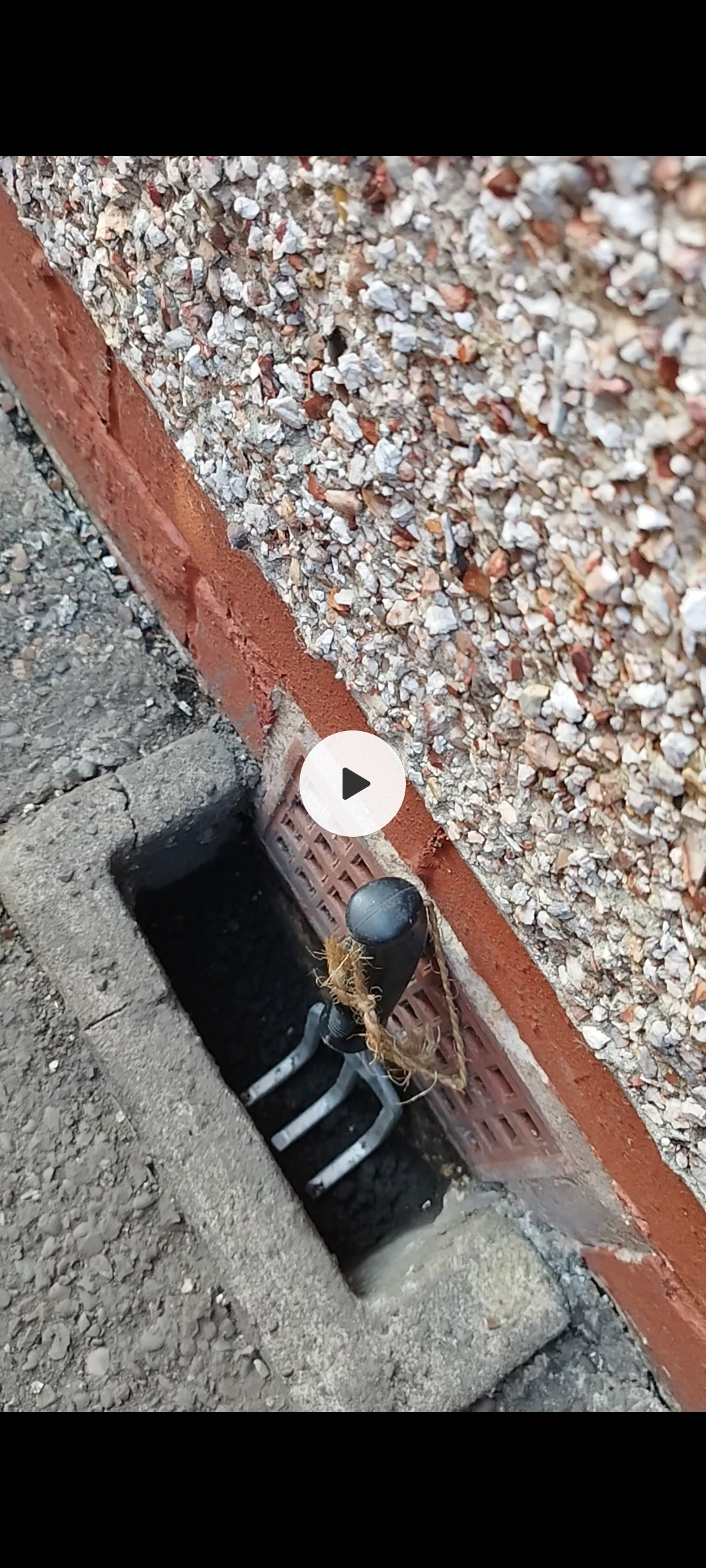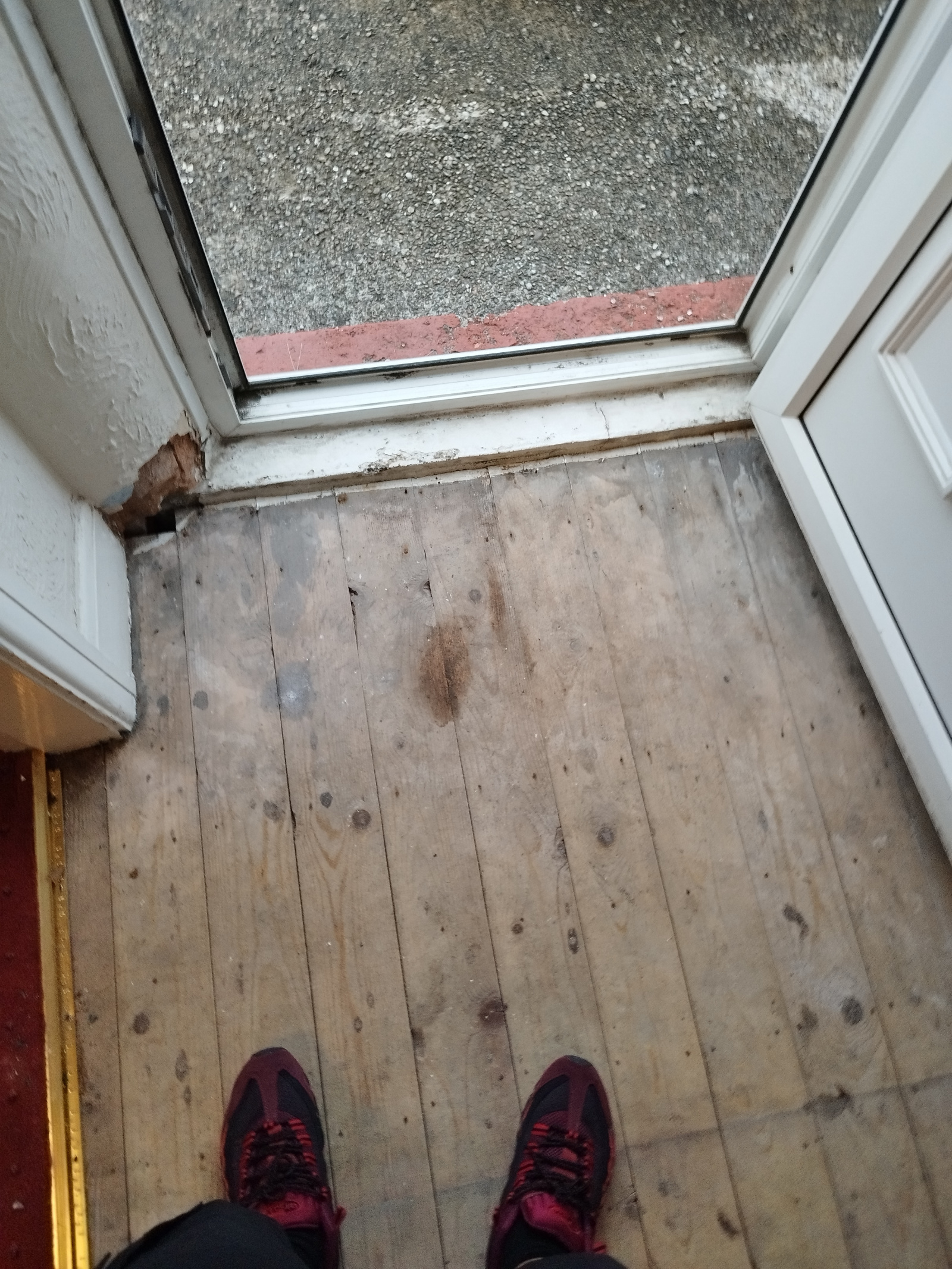We'd like to remind Forumites to please avoid political debate on the Forum... Read More »
We're aware that some users are experiencing technical issues which the team are working to resolve. See the Community Noticeboard for more info. Thank you for your patience.
📨 Have you signed up to the Forum's new Email Digest yet? Get a selection of trending threads sent straight to your inbox daily, weekly or monthly!
Can I do this myself
Options
Sekekama
Posts: 93 Forumite







 Long story short had damp in entrance hallway independent damp surveyor identified air bricks was cause.
Long story short had damp in entrance hallway independent damp surveyor identified air bricks was cause. I lowered trench of air brick 1 brick below was full of sludge sticks before and filled with gravel abit.
Now thinking of lifting floorboards and dehumidy subfloor and put new floorboards in a week later.
Been quoted £350 on labour alone can I do this myself is it easy?
0
Comments
-
Your floorboards are probably tongue & groove - Difficult to lift without damaging the boards. Running a dehumidifier won't achieve much. The void will still get damp. Make sure all the air bricks are clear, and the airflow should keep the void relatively dry.Your floor looks to be in reasonable condition, so I'd leave it down. Go ripping it up, and you will probably have to get new boards planed to size - Standard modern floorboards are ~18mm thick, 1930s likely 20mm, and the widths will not be the same either (more expense).Her courage will change the world.
Treasure the moments that you have. Savour them for as long as you can for they will never come back again.1 -
Floor boards never go back down right in my experience. We had a victorian property with similar damp issues. Ended up cutting a 4 inch wide trench around the entire outside perimeter of the house. Solved all our downstairs damp issues.1
-
Clever idea 💡Cheslea2010 said:Floor boards never go back down right in my experience. We had a victorian property with similar damp issues. Ended up cutting a 4 inch wide trench around the entire outside perimeter of the house. Solved all our downstairs damp issues.0 -
My son has similar problems with air bricks - what happens when it rains heavily? Does the air brick cavity fill with water?Cheslea2010 said:Floor boards never go back down right in my experience. We had a victorian property with similar damp issues. Ended up cutting a 4 inch wide trench around the entire outside perimeter of the house. Solved all our downstairs damp issues.0 -
My son has similar problems with air bricks - what happens when it rains heavily? Does the air brick cavity fill with water?Cheslea2010 said:Floor boards never go back down right in my experience. We had a victorian property with similar damp issues. Ended up cutting a 4 inch wide trench around the entire outside perimeter of the house. Solved all our downstairs damp issues.0 -
I've dug down a brick below air brick bottom please see images attached. The edge of the floorboards near door are spongy but don't seem like will break (unless 3-4 people stood on it).FreeBear said:Your floorboards are probably tongue & groove - Difficult to lift without damaging the boards. Running a dehumidifier won't achieve much. The void will still get damp. Make sure all the air bricks are clear, and the airflow should keep the void relatively dry.Your floor looks to be in reasonable condition, so I'd leave it down. Go ripping it up, and you will probably have to get new boards planed to size - Standard modern floorboards are ~18mm thick, 1930s likely 20mm, and the widths will not be the same either (more expense).
The damp surveyor broke plastering in edge of archway so some rubble dropped below to subfloor. I've taken damp meter readings of the exposed archway and it reads between 20-30 most places.
What would you do?0 -
The floorboards edge near door is spongy but doesn't seem like it will break but when damp surveyor broke into archway on side to check damp rubble dropped below to void.Cheslea2010 said:Floor boards never go back down right in my experience. We had a victorian property with similar damp issues. Ended up cutting a 4 inch wide trench around the entire outside perimeter of the house. Solved all our downstairs damp issues.
What do you think of my air bricks solution see images please0 -
Depending on how "spongy" the boards are, you may have a bit of rot in the joists. If that is the case, you'll need to remove skirting as well as the floorboards. Plaster will get damaged in the process, so that will need patching afterwards - Starting to turn in to an expensive job...Sekekama said:
I've dug down a brick below air brick bottom please see images attached. The edge of the floorboards near door are spongy but don't seem like will break (unless 3-4 people stood on it).FreeBear said:Your floorboards are probably tongue & groove - Difficult to lift without damaging the boards. Running a dehumidifier won't achieve much. The void will still get damp. Make sure all the air bricks are clear, and the airflow should keep the void relatively dry.Your floor looks to be in reasonable condition, so I'd leave it down. Go ripping it up, and you will probably have to get new boards planed to size - Standard modern floorboards are ~18mm thick, 1930s likely 20mm, and the widths will not be the same either (more expense).
The damp surveyor broke plastering in edge of archway so some rubble dropped below to subfloor. I've taken damp meter readings of the exposed archway and it reads between 20-30 most places.
What would you do?
Damp meters should never be used to get a definitive reading of moisture in a wall - They are only calibrated for untreated wood. In any other material, the readings will be off. However, used with a modicum of care, they can be used to identify areas that might be slightly damp.
Her courage will change the world.
Treasure the moments that you have. Savour them for as long as you can for they will never come back again.0 -
I mean that hallway is small it is not likely to have 3-4 there at any one time. It's spongy if I stand in it with force if normally then just about okay.FreeBear said:
Depending on how "spongy" the boards are, you may have a bit of rot in the joists. If that is the case, you'll need to remove skirting as well as the floorboards. Plaster will get damaged in the process, so that will need patching afterwards - Starting to turn in to an expensive job...Sekekama said:
I've dug down a brick below air brick bottom please see images attached. The edge of the floorboards near door are spongy but don't seem like will break (unless 3-4 people stood on it).FreeBear said:Your floorboards are probably tongue & groove - Difficult to lift without damaging the boards. Running a dehumidifier won't achieve much. The void will still get damp. Make sure all the air bricks are clear, and the airflow should keep the void relatively dry.Your floor looks to be in reasonable condition, so I'd leave it down. Go ripping it up, and you will probably have to get new boards planed to size - Standard modern floorboards are ~18mm thick, 1930s likely 20mm, and the widths will not be the same either (more expense).
The damp surveyor broke plastering in edge of archway so some rubble dropped below to subfloor. I've taken damp meter readings of the exposed archway and it reads between 20-30 most places.
What would you do?
Damp meters should never be used to get a definitive reading of moisture in a wall - They are only calibrated for untreated wood. In any other material, the readings will be off. However, used with a modicum of care, they can be used to identify areas that might be slightly damp.
I've treated the cause hopefully (if you see images of how that air brick was before and how it is now) maybe could have dug abit deeper but a entire brick should be enough to stop rain trickling in?0 -
Cheslea2010 said:Floor boards never go back down right in my experience. We had a victorian property with similar damp issues. Ended up cutting a 4 inch wide trench around the entire outside perimeter of the house. Solved all our downstairs damp issues.
Our next door neighbour did the same thing because block paving had been laid, higher than the old drive and bridged the DPC. Creating that gap sorted all their damp problems.
0
Confirm your email address to Create Threads and Reply

Categories
- All Categories
- 350.9K Banking & Borrowing
- 253.1K Reduce Debt & Boost Income
- 453.5K Spending & Discounts
- 243.9K Work, Benefits & Business
- 598.8K Mortgages, Homes & Bills
- 176.9K Life & Family
- 257.2K Travel & Transport
- 1.5M Hobbies & Leisure
- 16.1K Discuss & Feedback
- 37.6K Read-Only Boards





